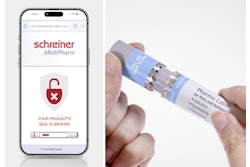As the challenges of reaching more patients in remote global locations and the rise of personalized medicines evolve, temperature-controlled packaging providers have to advance.
As a result, this decade has seen the introduction of “high-performance passive systems,” which not only utilize new techniques and materials, but also require new ways of thinking about packaging in order to get the greatest cost benefit without comprising patient safety.
Each temperature-controlled packaging system is the end result of working to meet user requirements. Often this materialises into simplifying the appearance, to reduce one of the biggest risk factors–human error.
Today, many companies’ high-performance passive systems can generally be packed one way. And some temperature-controlled packaging manufacturers may also include added safety measures, such as specialized labeling to visually indicate and verify the readiness for packing. This means there is a secondary safety check to ensure that things are prepared properly before packing.
These high-performance temperature-controlled packaging solutions are not too dissimilar in appearance from the outside to more traditional passive solutions, which relied on water-based coolants and foam-based insulations. However, technology advances have made it in easier to use systems, provide greater protection, and resulted in a better cost per shipment for the end user in that these products may be used multiple times.
The systems comprise an outer case, insulation and coolants in the form of bottles or bags. The case is typically lined with vacuum-insulated panels (VIPs) that deliver a high degree of insulation. The VIPs offer five to seven times as much insulation as the same thickness of foam.
Phase-change materials (PCMs), which are currently derived from plant oils, paraffins or salt-based solutions, are tailored to provide protection at various temperature ranges, but in theory could be designed for any temperature maintenance.
By coupling the PCM with the payload, the temperature is kept stable, as it will always try to equalize, thereby removing the requirement for mixed preparation coolants or insulating spacers.
The combined benefit of using VIPs with PCMs means prolonged duration, simplified preparation methods and reduced volumetric weight ratios, which reduces shipping costs.
Cost challenges
Cost will always be a key driver in decision-making and there’s a limit to what anyone is prepared to pay for what’s often a secondary packaging consideration. However, by fully understanding the risks in the supply chain, temperature-controlled packaging becomes a key pillar in avoiding problems and generating overall cost savings.
The challenge is to create better temperature-controlled packaging that is easier to prepare, size/weight efficient and are more cost-efficient, especially with more specialty drugs that are temperature-dependent.
However, without another step-change in technology, the market is moving toward making existing packaging work more effectively. So the main differentiators between temperature-controlled packaging options are good design, quality thermal testing reports, operational efficiency, ease of use and hazard reduction.
It is now more pertinent than ever to demonstrate the value of temperature-controlled packaging as a product in itself and not just an insulated box.
Neil Sherman is Technical Services Manager at Intelsius, a manufacturer and supplier of temperature-controlled and regulatory-compliant packaging. He is responsible for overseeing new product development, assessing new marketplace technologies, assisting with technical sales enquiries, managing the ISTA-certified testing laboratory and for driving continuous improvement processes and managing technical testing and reporting activities.






















